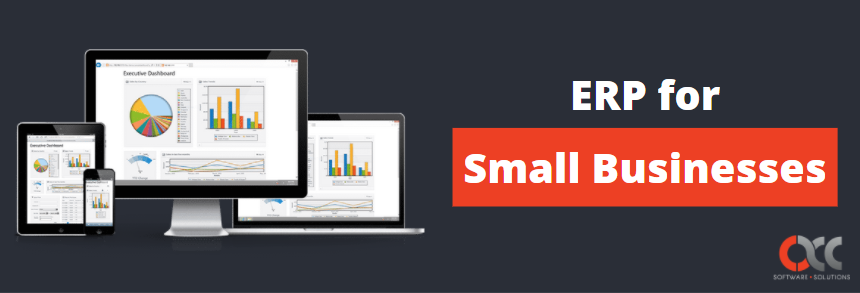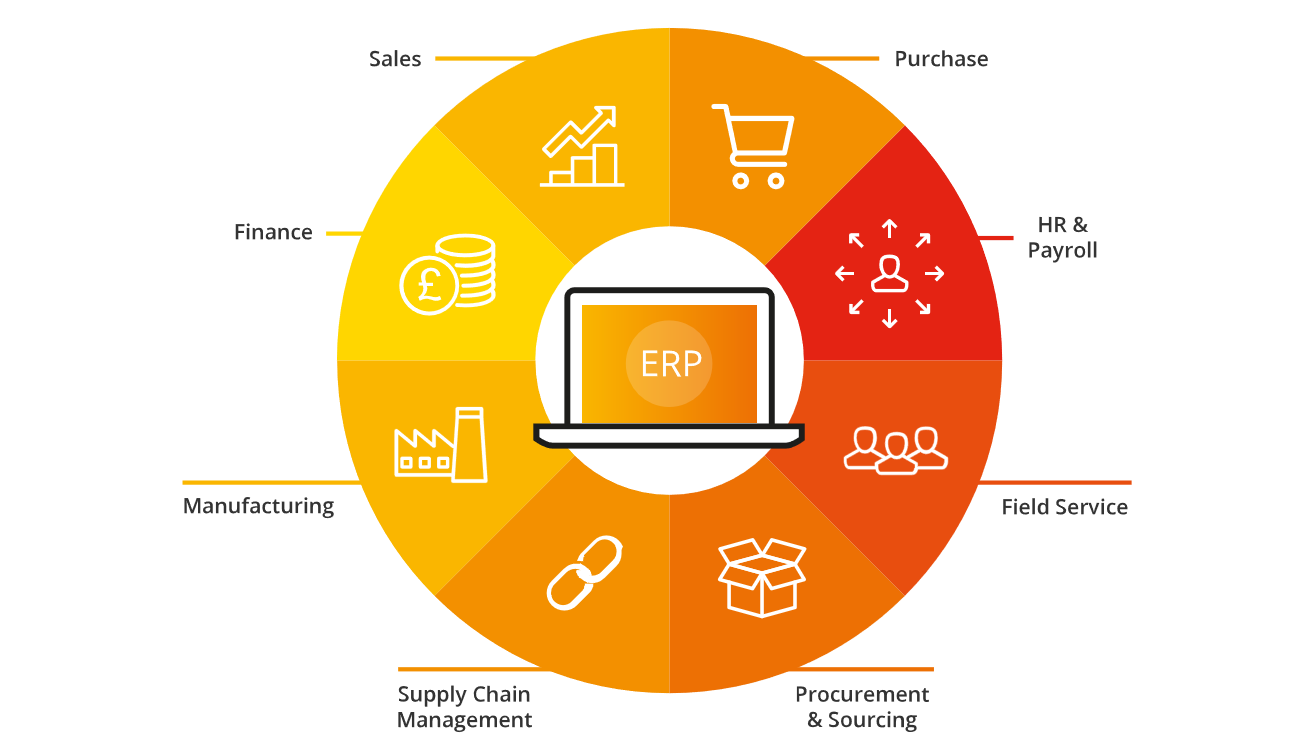
In today’s business environment, no business is too small for an ERP solution. Whether you’re a small or medium size business, you’re probably using multiple systems and spreadsheets for daily business processes. Unfortunately, as your business continues to grow, these old systems become difficult to manage and interrupt your growth potential.
An enterprise resource planning or ERP software empowers small to medium sized business by capturing all data into a single integrated system. A complete ERP system includes integrations with daily business processes such as accounting, supply chain, operations, commerce, reporting, and human resources. Most importantly, business processes will become stable and resilient with clear insights.
Within many small to medium sized businesses, employees are generally wearing multiple hats at one time. The motto “all hands on deck” is frequently used to get the job done. With multiple systems and spreadsheets, it’s almost certain that you’ll end up with inaccurate data. An ERP system solves this problem by blending and automating your key business functions into one central system. A single database will serve an entire small to medium sized business.
However, an ERP software implemented requires support from your entire business and entails a detailed plan to minimize the risk of failure. The implementation process is tedious and will involve a large chunk of your team’s attention. Often, the difference between success and failure is subjective, it’s a perception not a quantifiable measure. The perception relies on the unique set of goals and objectives set by your team, and whether these goals and objectives were clearly defined at the onset of the project. But here’s the good news: your business doesn’t have to be added to the laundry list of failed ERP implementations. With sufficient preparation and clear communication between team members and the selected partner / consultant, your implementation processes will succeed.
Real-time data visibility and improved decision making. With a view to the entire operation, your team will have an accurate up-to-date view of overall business operations. Precise data can be used in your marketing, supply chain, accounting, and human resource departments to make vital decisions. End-users can identify potential challenges or obstacles to reduce wasted time and quickly respond to the changing business environment. With a clear view of available data, users can compare sales and revenue from different month, forecast future sales and financial needs.
A single integrated solution. The need to enter data into multiple locations and the risk of data errors is long-gone with an ERP system. All data is integrated into a single location between each department (sales order entries, product pricing, shipping/delivery, inventory and warehouse, production, procurement, invoicing, financials, and more).
Increased employee productivity. Key data and information is readily available to all end-users on a single platform at anytime, anywhere. The ERP system will maintain information such as: vendors, customers, products/materials, routines, and distribution/manufacturing processes, and more. With an increased view of daily business processes, end-users can focus on the increased workload of your growing business.
Maintain control and lower costs. Often, small to medium sized businesses use cheaper tools such as Excel spreadsheets and Quickbooks to maintain their financials. However, as transactions increase and business processes become more complex, these solutions lack control of data, lead to common errors, and have the potential to leak confidential information. An ERP software becomes a necessity when your business begins to grow. Small business owners will save time and money by streamlining business processes into one simple solution.
Improved flexibility. With the ever-changing market trends, an ERP software allows businesses the agility and flexibility to adopt to market needs and conditions.
Increased sales and long-term planning. An ERP solution provides an automated authentication to prevent loss of sales. The software will send reports of proposals on a set interval – most businesses set this interval for a daily occurrence. Improve customer service and profitability by maintaining consistency in daily business policies and processes.

While the costs of maintaining Excel spreadsheets and Quickbooks is much lower than implementing an ERP software, the benefits make the software a necessity for any growing small to medium sized business. It helps make effective decisions with real-time visibility, allows all end-users to view data and business processes in one single location, provides increased employee productivity, maintains control of data and lowers operational costs, improves flexibility with the ever-changing market trends, increases sales, and allows for long-term planning.
Is your small to medium sized business ready to forget the painful spreadsheets and implement an ERP software? Contact the ACC team to schedule a discovery call and begin your ERP journey. We excited to help your business grow in ways you never thought were possible!

Solutions by Industry
What's New
Top 5 Reasons Manufacturers Are Choosing Acumatica Over Traditional ERPs
Read MoreSubmitted by Stephanie Dean on Fri, 12/05/25 - 16:29
Why 2025 Is the Year to Move from QuickBooks to Acumatica
Read MoreSubmitted by Stephanie Dean on Fri, 10/24/25 - 15:55
What ACC Clients Should Know About Acumatica’s New R2 Release
Read MoreSubmitted by Stephanie Dean on Fri, 10/10/25 - 16:48